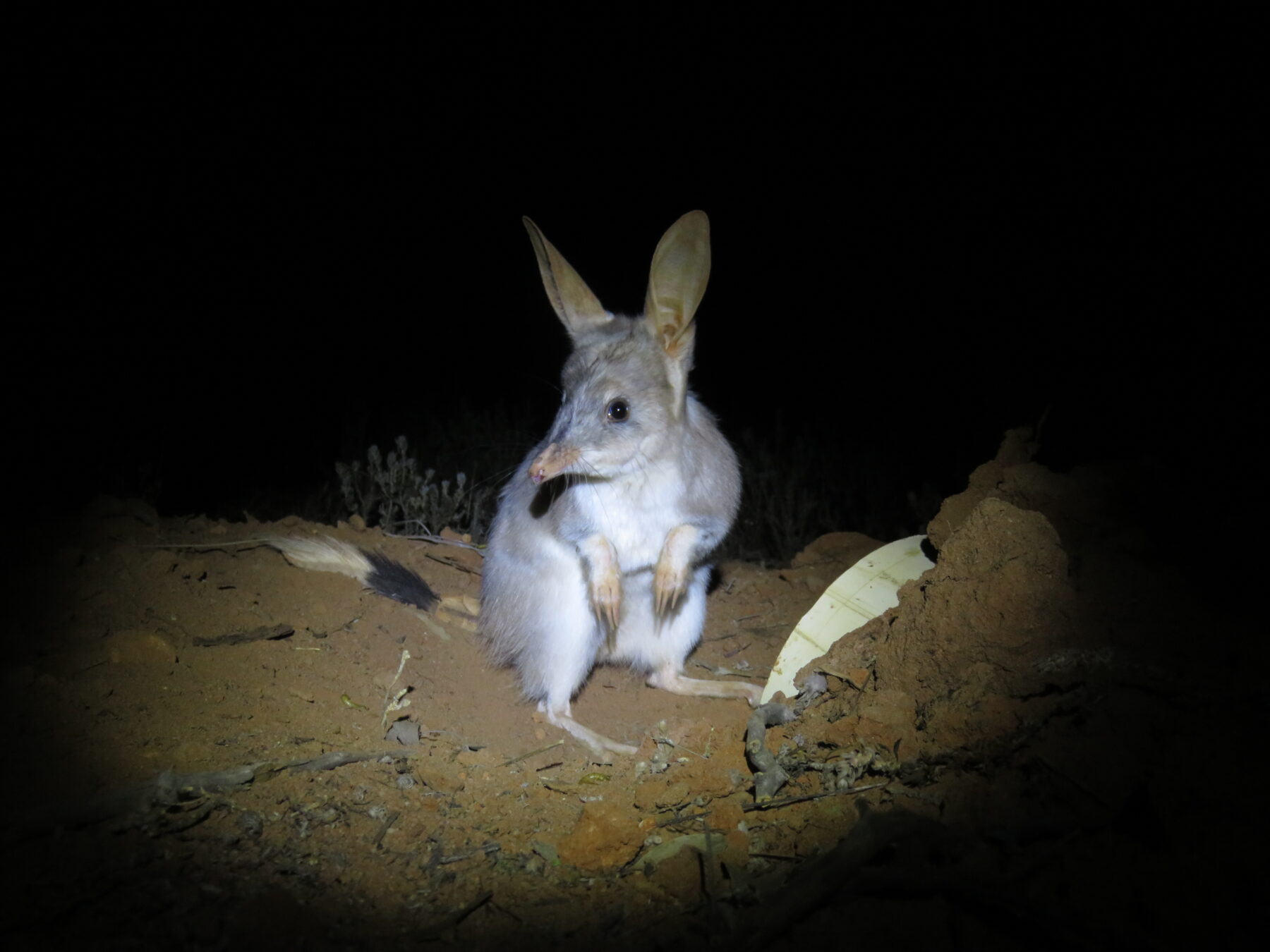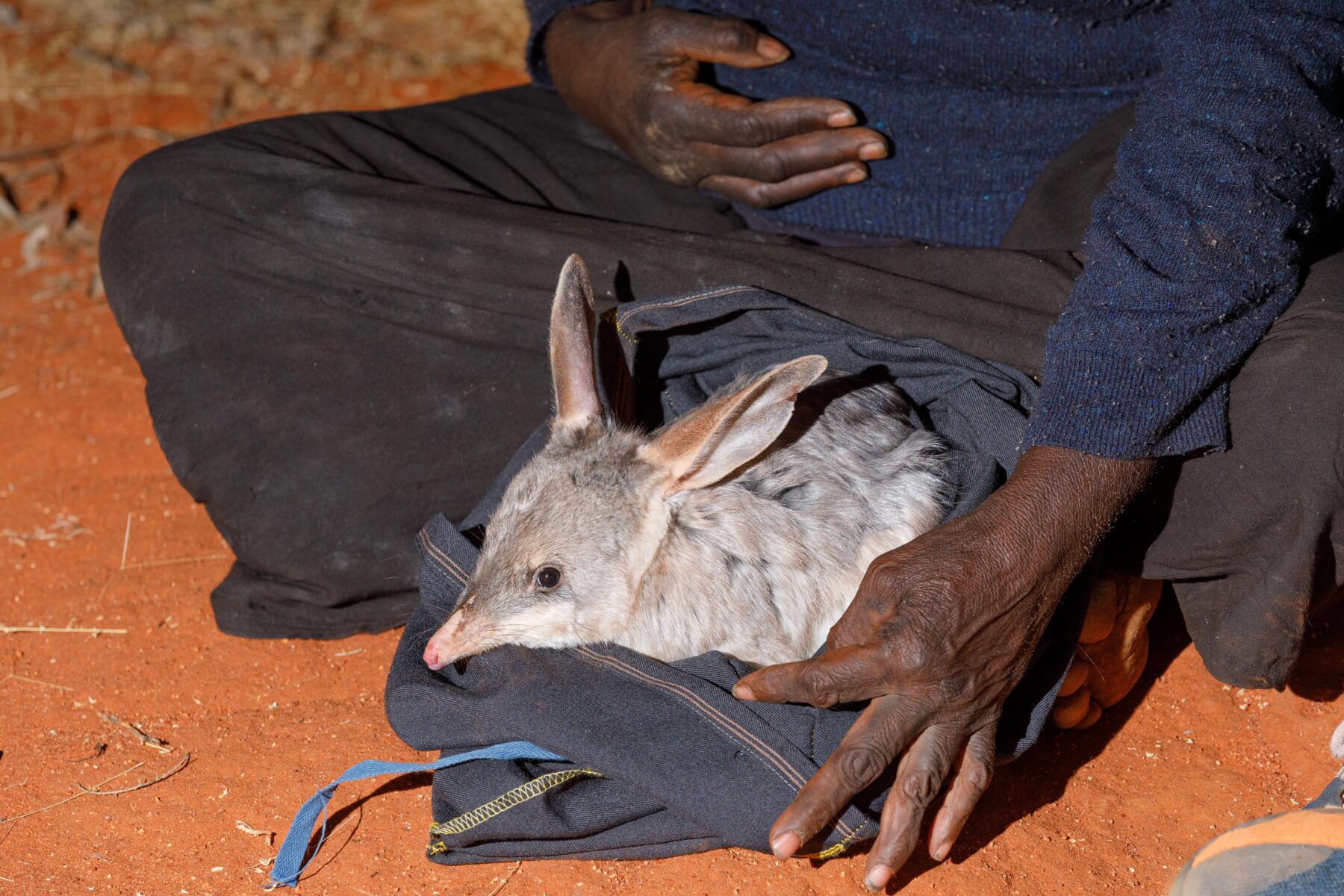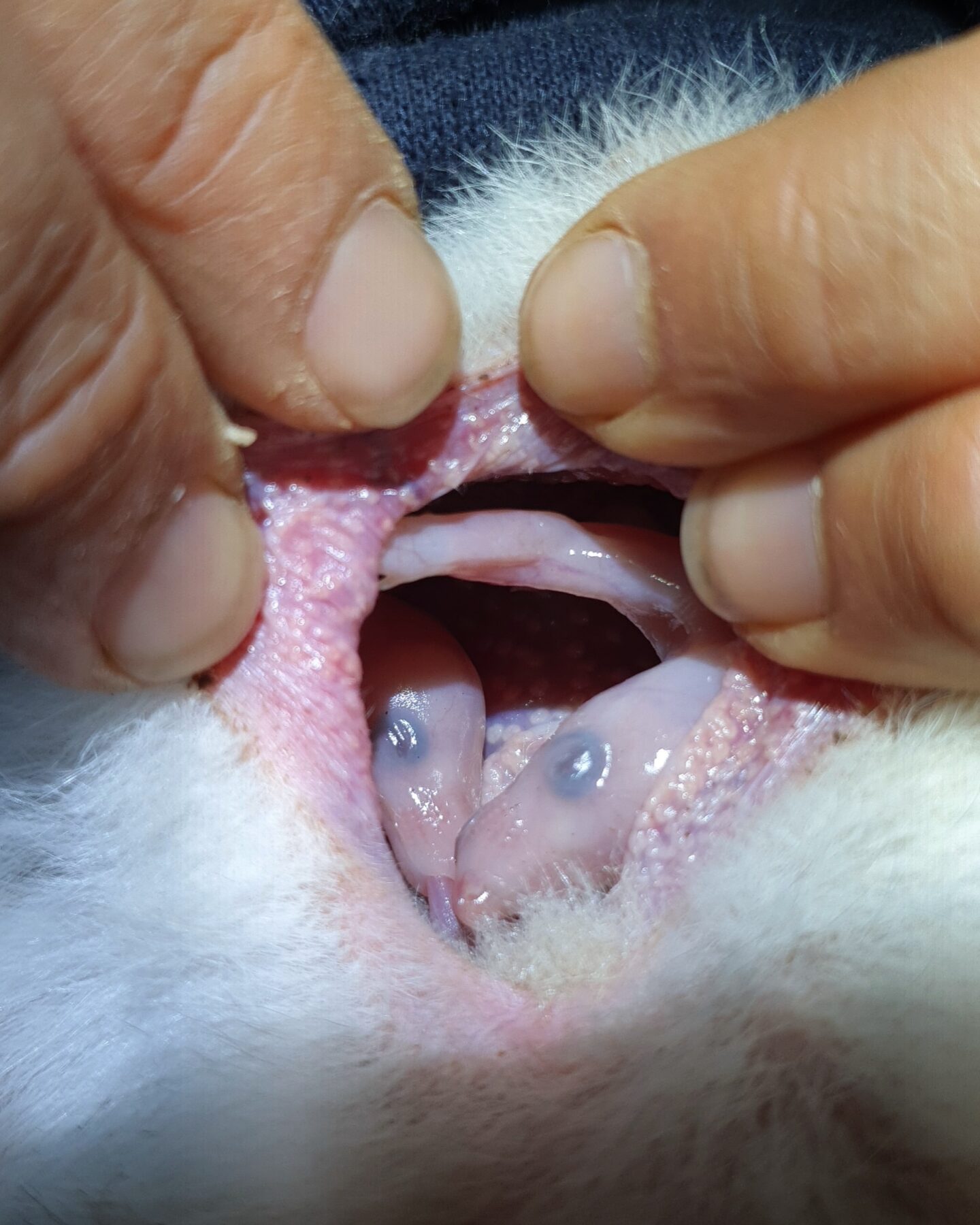Bilby boom a timely Easter treat

The 2023 census was conducted at six Australian Wildlife Conservancy (AWC) protected areas around the country, with the overall estimated population of 3315 more than doubling from the 1480 estimated individuals in 2022.
The increase in numbers is attributed to several factors – a new population established at Newhaven Wildlife Sanctuary in the Northern Territory, the first estimate of a population established for several years at Mt Gibson Wildlife Sanctuary in Western Australia, and generous rainfall across most of Australia, which replenished the landscape and provided good conditions for breeding.
Dr John Kanowski, AWC Chief Science Officer, welcomed the increase.
“The greater bilby once occurred across 70 per cent of mainland Australia, and sadly, is now only found within some 20 per cent of its former range,” said John. “This decline represents the loss of our natural heritage, the loss of cultural heritage for Indigenous people, and the disruption of important ecological processes – for example, as ‘ecosystem engineers’, bilbies turn over several tonnes of soil per annum to create fertile pockets and perfect germination conditions for plants.
“Through fenced refuges, such as those established by AWC, we have been able to return the bilby to six ecosystems from which they’ve become extinct and provide them with safe environments in which they can safely breed and fertilise their numbers.
“Re-establishing the species across its former range is also important for maintaining long-term adaptive potential.”
During surveys over the last year, ecologists were thrilled to encounter several juveniles and pouch young – 17 of 25 females captured during Pilliga’s December survey were carrying pouch young, while Newhaven Wildlife Sanctuary recorded its first photo evidence of a juvenile in November and observed juvenile tracks during a tracking survey.
Detections of young animals are a significant measure of the bilby’s ability to survive into adulthood within the safe havens. The process of breeding also means new recruitment of individuals for the protected populations, which will contribute to larger population estimates in the near future.

Need to know
- Greater bilbies aren’t extinct but are endangered in Queensland and listed as vulnerable nationally.
- Less than 10,000 survive in the wild.
- Greater bilbies once roamed 70 per cent of Australia. They’re now one of Australia’s most at-risk animals with only 20 per cent of their former habitat remaining.
- Their close relative, the lesser bilby, was declared extinct in the 1950s.







